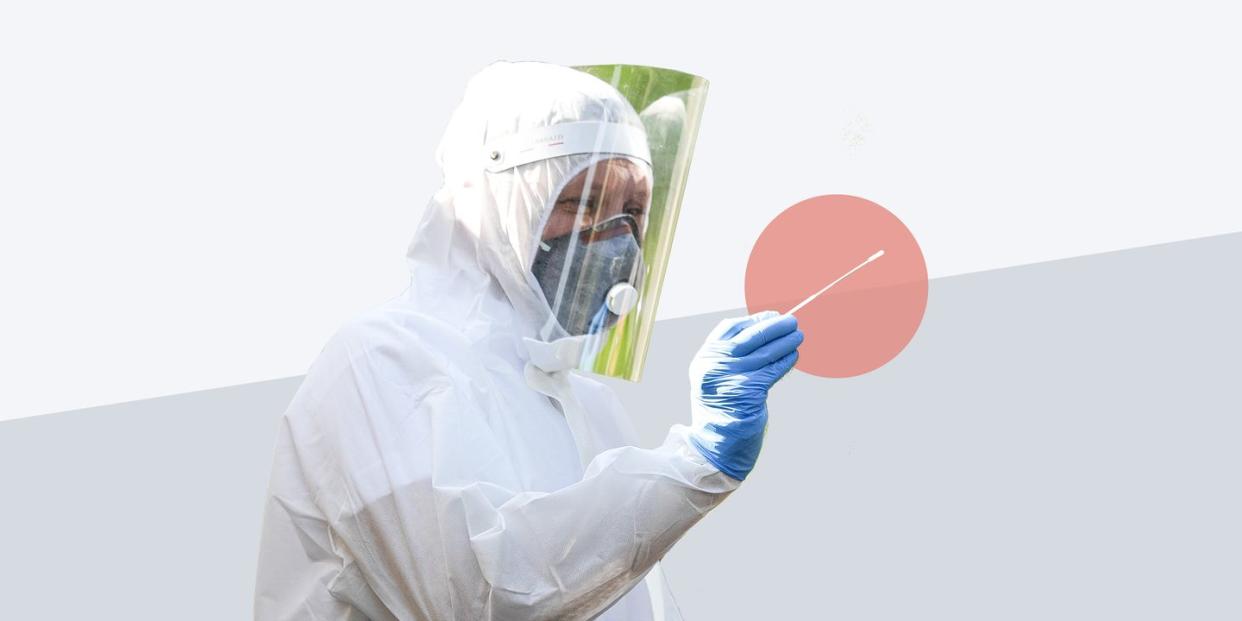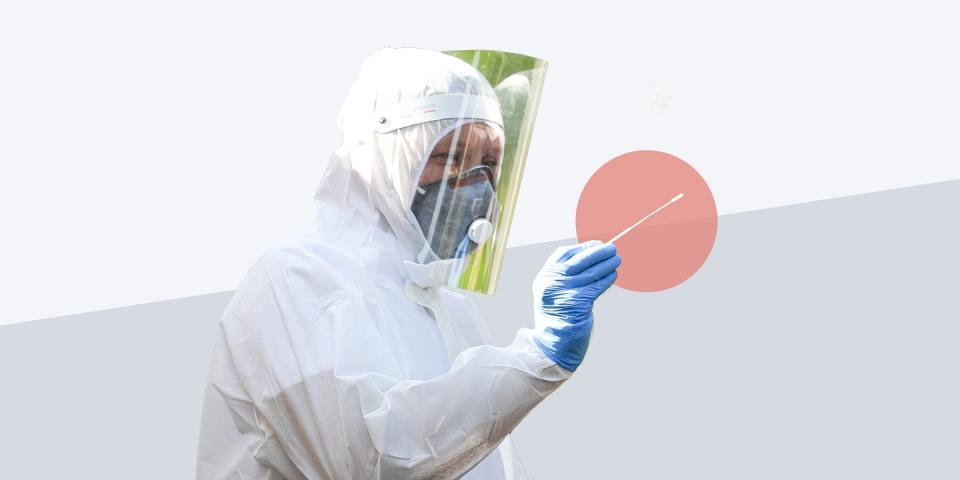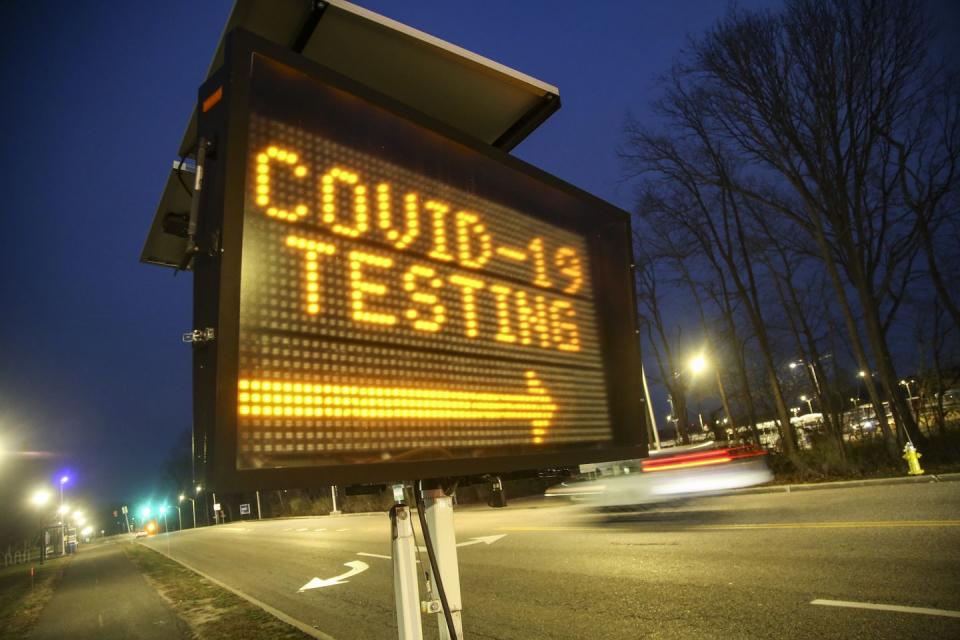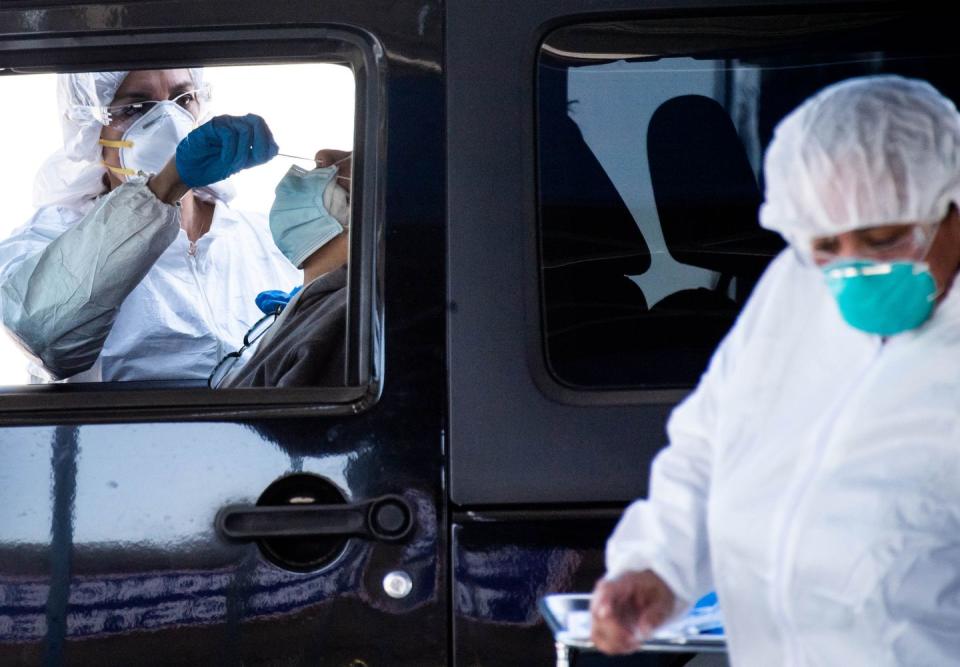We Have to Start Regularly Testing People Who Aren't Sick


We locked down our society because we didn't know where the virus was in our population. If you don't know where it is or how far it's spread, you can't fight it in any strategic way. So you shut it all down. That's particularly true with COVID-19, which people can carry around for four or five days, spreading to others, before they develop—or become aware of—symptoms. It leads to clusters of infection and exponential spread. But you can find out where the disease is by testing people. If you can test enough people regularly enough, you can isolate them early, before a case becomes a cluster. You can fight the pandemic in a targeted way while keeping more of the country open. It's radar for the battlefield.
If you decide today that you need a COVID-19 test, you’ve got options: You can probably get one at your doctor's office, or go to an urgent care facility. In some areas, you can get a drive-thru test. This is all good, and a big improvement from the serious testing shortage we faced not long ago. Those early diagnostic tests for the disease—those swabs that go up your nose and seemingly poke your brain—were reserved for hospital workers and those who arrived at emergency rooms in extreme distress. Over time, the criteria has gradually expanded with supply, and now includes pretty much anyone with symptoms.
But in a key respect, the future of our fight against the pandemic is in testing people who are not showing symptoms, and doing so on a regular basis. Germany has pretty much dominated their pandemic response so far, and it's not just because they developed sufficient volume of testing early on to administer a lot of them and ultimately avoid shutting down a lot of their economy. (75 percent of German shops never closed. Their professional soccer league, among the best in the world, resumed play last weekend without fans in the stadium—a boon to gamblers everywhere.) But one German high school's approach left me fixated: they started testing students—who are back in the classroom nationwide—every four days, regardless of symptoms.

"We need to have some way of doing regular surveillance screening to ensure the safety of workers and the people they interact with," says Bob Kocher, an M.D. and Silicon Valley venture capitalist who heads up the state of California's testing initiative as part of Governor Gavin Newsom's pandemic response task force. Many who contract COVID-19 will never show symptoms, but can still pass on the disease. That takes on even more significance for essential workers, from hospitals to the grocery store, as many of these roles require interacting with a lot of people on a daily basis.
"Even if you are going to be symptomatic," Kocher says, "the first one-to-four days, people's symptoms may not be perceptible to them, because you're just starting to feel not normal. So that's why it's really important that you have systematic testing, and testing people early."
The nature of the novel coronavirus that has upended the world is that it spreads in what David Dowdy, an epidemiologist at Johns Hopkins University, calls "outbreak settings." The disease spreads most effectively, and dangerously, in clusters. "You might easily have 50 percent or more of everyone who gets sick not transmit this to anyone else," he says. "But then you have that one church service, or one meatpacking plant, or one long-term care facility where you have 80 cases. If you can prevent those outbreaks from occurring, or prevent them from expanding, then you can cut the overall number of transmissions substantially. But you can't know who's going to be the source of that next outbreak without testing the people who could be.
"If you have the supplies and people can tolerate the test," Dowdy adds, "then what you do is you identify everyone in your population who has a large number of contacts, and you test those people on a very regular basis."
(That "tolerate the test" part is real: if we want to test people who have a lot of daily interactions once or twice a week, that's a lot of swabs hitting their brains. Luckily, Kocher says California is now doing "thousands and thousands" of saliva tests each day, which are far less unpleasant. Meanwhile, some of the swab tests coming out now only require going into the front of the nose.)
The state of California is ramping up surveillance testing in a big way. They began with regular diagnostic tests for hospital and nursing-home workers, and then expanded to jails and prisons. (The latter have emerged as a major vector in areas across the country.) Kocher says the state is now regularly testing first responders, regardless of symptoms, in Los Angeles and San Francisco. Next up will be other workers with a high number of contacts per day, beginning with public-transit employees. Food-service workers and grocery-store workers will come next.
"The ones that we've been able to do most rapidly outside of healthcare institutions have been public employees," Kocher says, "because we insure them, so it's easier to administer it. We've gotten a lot of cooperation from private sector employers, but it takes a bit longer to enact those targets, because the private sector would have to agree and then set them up."

But he notes there is already a lot of movement in the private sector. "Maybe it's that I'm exposed to people in California, but I've had numerous conversations with Fortune 500 companies who are developing really ambitious testing plans for their workers as they think about how to bring them back to work. And I think you're going to see widespread testing by companies across the country, because it's really important for those companies to build working environments where the workers feel confident coming back to work. And in many cases, it's that testing of the workers that will give customers confidence to interact with the companies."
As employers look throughout the summer at how they can prosper in Phase Two of this pandemic, in which we will try to restart some portion of our economic activity, many will turn to surveillance testing. It offers workers and customers a bit more confidence that they are not walking into a facility that's become a hotspot. It's something of an alternative to the new push, primarily from congressional Republicans, to indemnify companies against lawsuits alleging they endangered their workers' health, a state of play that could lead to a whole lot of moral hazard. In short, it's how you fight pandemic disease in the year 2020.
All the talk of catching cases early is not just to prevent immediate spread, either. A surveillance testing regime also works well in concert with contract tracing. When someone tests positive, they've likely left a trail of contacts who they may have infected before they became aware they were carrying the virus. This kind of program allows us to trace their footsteps and inform anyone they came in contact with that they, too, could be sick and should isolate—regardless of whether they yet have symptoms. In South Korea, where the legal regime is less oriented around privacy protection than those in the United States and Europe, this takes the form of an app which allows authorities to trace your movements. Here, in a growing number of states, it involves hiring people to be contract tracers.
"The hardest part of contact tracing," Kocher says, "is we're going to call up a person after they're infected, hopefully very quickly, and say, 'We're very sorry you're infected. And please let's walk through the last number of days and make a list of all the people that you've spent more than 15 minutes with.' And that's the list of contacts. We'll ask them for information about how to reach them, and then we'll try calling the people. If a person has a few contacts, it's just much easier than if they've had 40 or 50. And so the sooner you test and isolate the person who is infected, the fewer contacts there are to reach out to, the fewer contacts that you have to test and the less spread that occurs."
Catching people early does not just get them isolated sooner, stopping them from infecting more people. It also cuts down on the number of people a contact tracer has to reach out to, and who then may have to get tested. The tracer can then move on to the next case faster, tamping down on more potential clusters and outbreaks in less time. They work in tandem to create a synergistic, highly effective, and concentrated response.
It will not stop all cases, or even all outbreaks, but it is the only smart and responsible way we have right now to get our economy up and running in some capacity without surrendering to mass death. That was on the table for some of us, just like the idea we would indemnify companies rather than have them test their employees. This is not a scenario where it’s necessary or acceptable to sacrifice people. It's time to stop reacting, in more ways than one, and get ahead of this thing.
You Might Also Like

